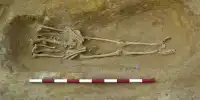An autotroph, or primary producer, is an organism that produces complex organic compounds (such as carbohydrates, fats, and proteins), using energy from photosynthesis or inorganic chemical reactions (chemosynthesis) from the ordinary substances around it. The word “autotroph” comes from the root word “troff” for “self” and “food”. An autotroph is an organism that feeds on itself without the help of another organism. They are the ones that produce should in food chains such as land or tree water (as opposed to heterotrophs as consumers of autotrophs). They do not need any living sources or organic carbon. Because of this, autotrophs are often called “producers.” These form the basis of an ecosystem’s energy pyramid and provide the necessary fuel for the existence of all heterotrophy (organisms that can receive their food from others). Most autotrophs use water as a reducing agent, but some may use other hydrogen compounds, such as hydrogen sulfide. Some autotrophs, such as green plants and algae phototrophs, mean that they convert electromagnetic energy from sunlight to chemical energy in the form of reduced carbon.
The first life forms on earth had to be autotrophs in order to exist and create energy and biological substances in a previously living environment. Autotrophs can be photoautotrophs or chemoautotrophs. Phototrophs use the light source as an energy source, while chemotrophs use the electronic donor as an energy source derived from organic or inorganic sources; However, in the case of autotrophs, these electron donors come from inorganic chemical sources. Heterotrophs probably evolved as autotrophs became more common, and some life forms discovered that autotrophs were easier to eat than simply making energy and organic matter for themselves. All autotrophs use living ingredients (inorganic sources) to create their own food. Due to their ability to produce their own food, autotrophs are generally referred to as primary producers and thus occupy the basis of the food chain. Lithotrophs are inorganic compounds such as hydrogen sulfide, elemental sulfur, ammonium, and ferrous oxide as agents for biosynthesis and chemical energy storage. Photoautotrophs and phototrophs utilize a portion of ATP produced during photosynthesis or reduce the oxidation of inorganic compounds to NADP + NADPH in the formation of organic compounds.















